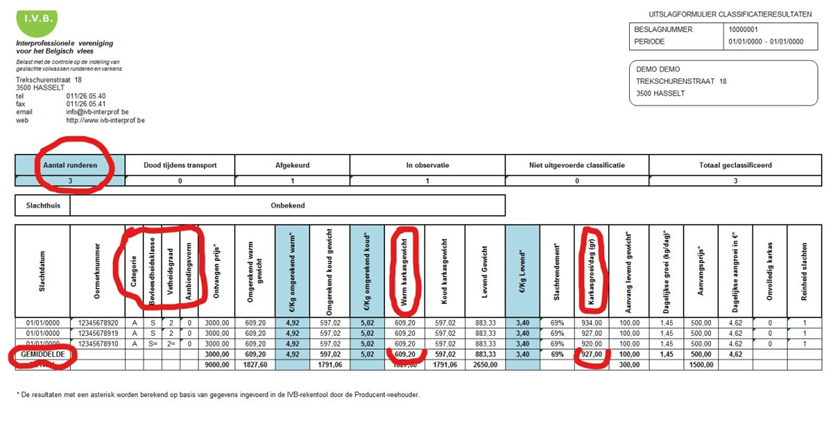“Transparency of data. The livestock dealer who buys the animals from the farms is better versed in estimating the correct weight of the animals sold. He was the person who communicated the weights to the farmer. Through IVB, the farmer can get this directly from the slaughterhouse and there is never any discussion about the weight of the animal.”
In the slaughterhouse, the carcasses are weighted and are classified (SEUROP + fat). IVB requires that all carcass records of all slaughtered animals in Belgium must be made available to the Belgian owners of the slaughtered animals. Each livestock owner pays a fixed amount per animal slaughtered. The livestock owner can receive this by email on a daily, weekly or monthly basis. For the young bulls the carcass growth is calculated. This is the growth per day, from the moment of birth until the moment of slaughter. ( = carcass weight /age in days) . This is only calculated for bulls.
These data can be sent to the farmer by email, when the farmer asks for it. For the bulls (less than 24 months) the daily gain of carcass weight is calculated. So you know the daily gain and you can see if change in management (feed, genetics,..) has led to a better performance of the bulls. When the slaughterhouse doesn’t send the data on time , they get a warning.

In this figure , you see de results of the animals , slaughtered during a certain period . In this mail you can see the classification of the carcass and the daily carcass growth of the bulls ( average of 927 gram/day carcass weight for the 3 bulls.
“The correct data of daily gain bulls, so the farmer can evaluate what he is doing. Other feed , other genetics, other races can be benchmarked to search the best performances on the farm.
Source of information:
- Interview with Sander Cleuren by the BovINE Network Manager from Belgium (Dirk Audenaert: dirk.audenaert@boerenbond.be)
Further information:
- https://www.ivb-interprof.be/interprofessionele-vereniging-voor-het-belgisch-vlees.html